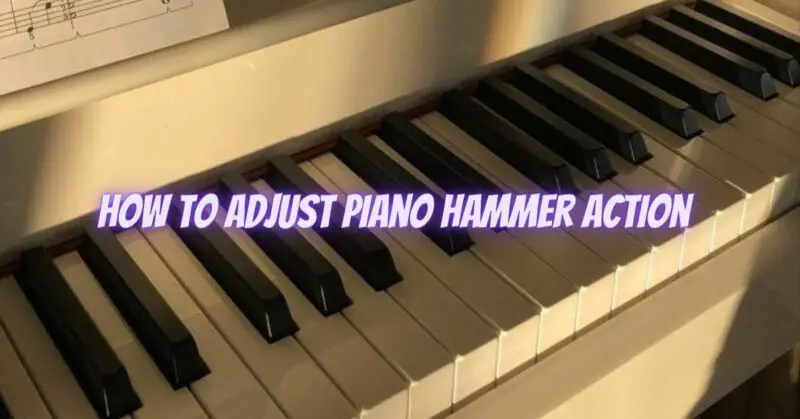The piano hammer action is a critical component of the instrument, and its proper adjustment ensures optimal performance and sound quality. Over time, piano hammers can wear down or shift, affecting the touch and tone of the piano. Regular maintenance and adjustments are essential to keeping your piano in excellent playing condition. Here’s a step-by-step guide on how to adjust piano hammer action:
1. Check for Wear: Before making any adjustments, examine the hammers for signs of wear or damage. Worn hammers may have grooves or flattened surfaces, affecting their ability to produce clear and resonant tones. If the hammers are significantly worn, they might require replacement or reconditioning by a professional piano technician.
2. Inspect Hammer Alignment: Observe the alignment of the hammers concerning the strings. Ideally, each hammer should strike its corresponding string squarely and evenly. Misaligned hammers can result in uneven tone and diminished clarity. To correct misalignment, seek assistance from a skilled piano technician.
3. Check Key Height and Dip: The key height and dip are crucial factors in hammer action regulation. Improper key height can affect the hammers’ travel distance, leading to issues with touch and response. Key dip, on the other hand, determines how far the key travels before the hammer strikes the string. Measure and adjust both key height and key dip according to the piano’s manufacturer specifications or consult a piano technician for guidance.
4. Voicing the Hammers: Voicing refers to the process of shaping and adjusting the hammers’ felts to achieve the desired tone and timbre. A skilled piano technician can voice the hammers to produce a balanced and expressive sound across all registers of the piano. Voicing involves needling the felt and manipulating its density to achieve the desired tonal characteristics.
5. Adjusting the Let-off and Escapement: The let-off and escapement are crucial for ensuring proper piano action regulation. The let-off refers to the distance between the hammer and the string before the hammer is caught by the back check, allowing the note to ring freely. Escapement is the mechanism that enables the hammer to fall back quickly after striking the string, preparing it for the next note. Both let-off and escapement adjustments require precision and are best done by a qualified piano technician.
6. Regulating the Repetition Lever: The repetition lever is responsible for the piano’s rapid key repetition, enabling the pianist to play fast passages smoothly. Proper regulation of the repetition lever ensures that the hammer returns swiftly to its resting position after each keystroke. Adjustment of the repetition lever requires technical expertise and should be done by a professional piano technician.
7. Check for Noise and Buzzing: During the adjustment process, carefully listen for any noise or buzzing that may occur when the hammers strike the strings. Buzzing sounds could indicate loose parts or misalignments that require attention.
Conclusion: Adjusting piano hammer action is a complex and delicate process that significantly impacts the piano’s touch and tone. While some basic adjustments can be made by knowledgeable piano owners, more intricate adjustments and voicing should be handled by a qualified piano technician. Regular maintenance and proper adjustments ensure that your piano’s action remains responsive, consistent, and capable of delivering the beautiful and expressive sound that pianists cherish.


